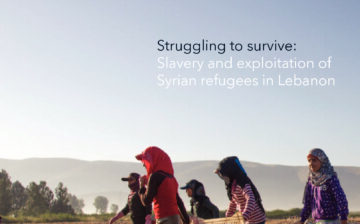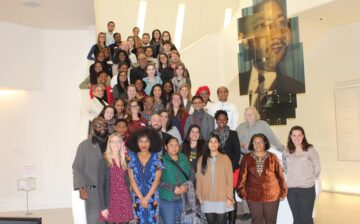Sign up for our news digest
I agree to receive email updates from Human Trafficking Search. I may unsubscribe at any time.
Posts by: Human Trafficking Search

Backpage Caught in Congressional Battle
Backpage.com, an online classified service, is currently enmeshed in a federal legal battle and congressional scrutiny for its role in facilitating an online market for commercial sexual exploitation and sex trafficking and its unwillingness to cooperate with federal lawmakers to make changes to prevent such exploitation.

What Was In Your Chocolate This Easter?
Easter has come and gone, and the chocolate bunny was in its full glory. Every year, ninety million chocolate bunnies are produced to meet the Easter demand, generating (along with other Easter candies) over $2.26 billion. However, despite the ease with which these innocent bunnies bounce into our shopping carts, their origins may not be so innocent.

Presidential Elections and Human Trafficking: Positions and Actions
With the presidential elections heating up and the primaries taking center stage in the media, it is important to know where contenders stand on the issue of human trafficking.
Showcasing Action: The McCain Institute’s Human Trafficking Symposium
Last week, The McCain Institute hosted a Human Trafficking Symposium as a part of their Human Trafficking Conversation Series. The Institute began the conversation series to increase awareness about human trafficking and spark dialogue that connects practitioners in the movement. The symposium brought leaders and survivors in the movement on stage to share the work they are doing to take action and to hear their suggestions for policy and systemic change.

Recent Progress to Combat Slavery on the High Seas
While the existence of slavery and human exploitation in the maritime fishing industry continues to be a known human rights abuse, several advancements in the fight to eliminate slavery from fishing boats occurred last week that might improve the lives of maritime laborers and clean up fishing supply chains.
Suburban Action against a Growing Problem
Human Trafficking has long been considered a problem in large the cities. From New York to Portland, these hubs for human trafficking have engaged service providers, lawyers, law enforcement officials, and other professionals focused on raising awareness and tackling the needs. Until recently, these stakeholders have largely neglected suburban areas. However, suburban areas are slowly but surely creating resources and infrastructure to support victims of human trafficking.

February 8- International Day of Prayer and Awareness against Human Trafficking
Today is the second International Day of Prayer and Awareness against Human Trafficking. The day is intended to raise awareness and encourage reflection on the violence and injustice that impact victims of human trafficking. February 8th was selected as the International Day of Prayer and Awareness against Human Trafficking as it is the day commemorating St. Josephine Bakhita, the patron saint of anti-trafficking in the Catholic faith.
Unaccompanied Migrant Children’s Vulnerability to Human Trafficking in the United States
Recent reports of unaccompanied migrant children arriving in the United States and being subjected to situations of human trafficking and exploitation have caught the attention of Congress and may spur reform. As previously reported in Human Trafficking Search, the influx of unaccompanied children arriving in 2014 and the recent increase in fall 2015 have given way to serious protection concerns in home countries and in the U.S.

Youth Leadership on Anti-Human Trafficking
Throughout modern history, some of the most successful human rights movements in the United States and globally have had a strong student and/or youth voice that has proved invaluable to advancing the cause. For human rights struggles to be effective, they should reflect the breath and width of society to allow for all types of voices to be heard, including those of students and youth.
Heart of the Matter: A Film about the Trafficking of Refugees in the European Union
In response to the refugee crisis in Europe, Worldwide Documentaries has conceived Heart of the Matter, a short film that will also serve as a companion piece to Not My Life, the universally acclaimed documentary on global human trafficking and child exploitation.
In the European Union (EU), the intense, daily preoccupation with the consequences of massive immigration has created an awareness gap with respect to the most dangerous consequence of all: human trafficking
